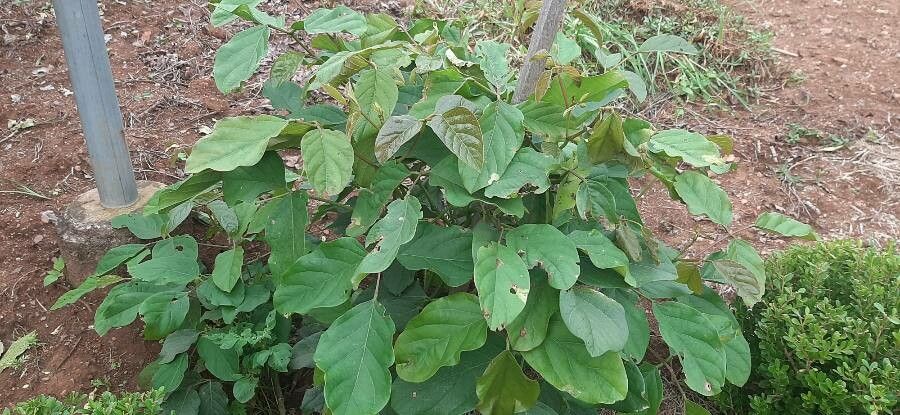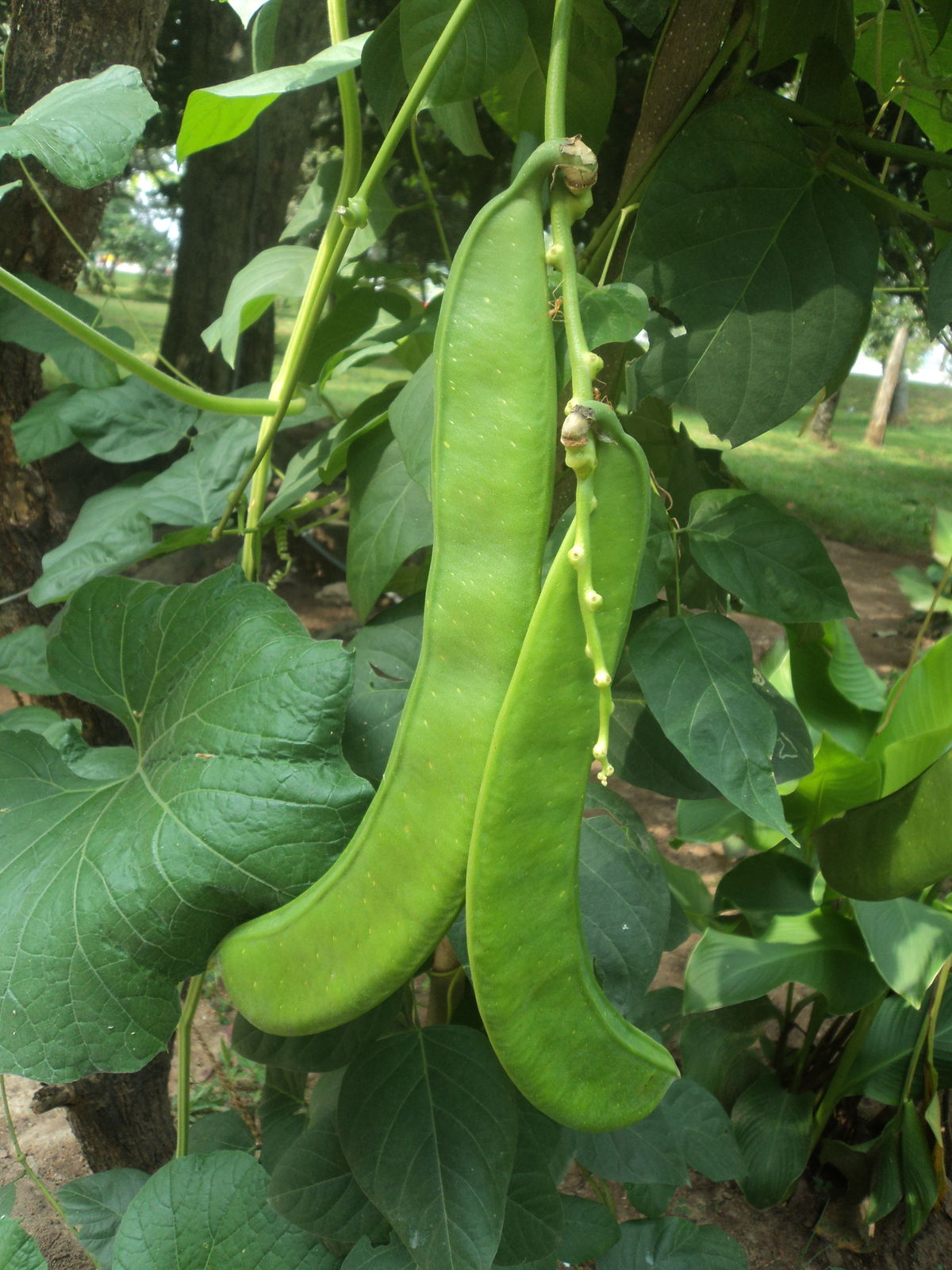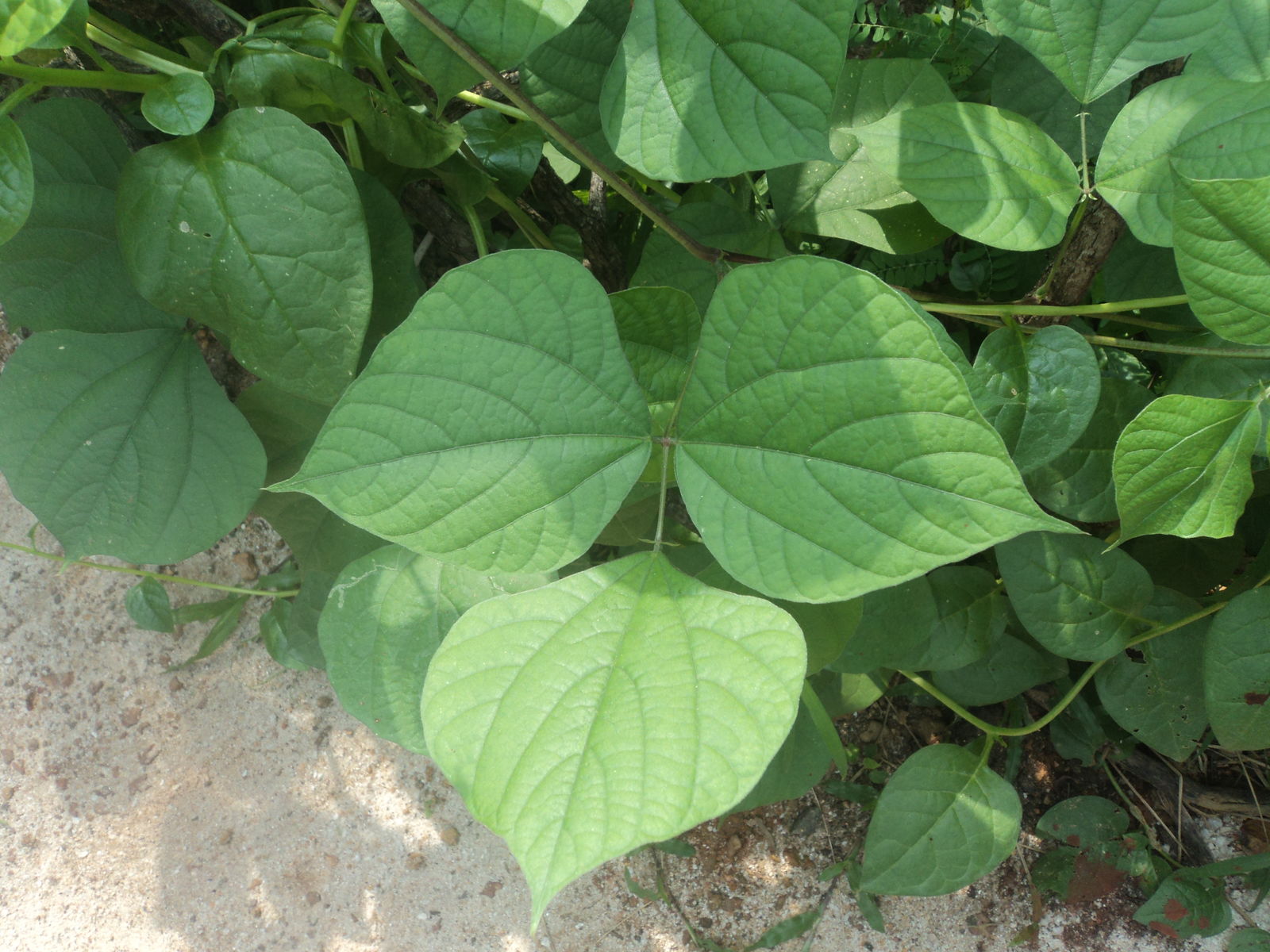Jack bean
canavalia ensiformis
Also known as: ["horse bean","sword bean"]
Overview
A tropical legume species known for its large, sword-shaped pods and potential use as a nitrogen-fixing crop.
Benefits & Perks
["disease resistant","fast growing","wildlife attractant (bees, butterflies, birds)","drought tolerant"]
Botanical Classification
| Phylum: | Magnoliophyta |
| Class: | Magnoliopsida |
| Order: | Fabales |
| Family: | Fabaceae |
| Genus: | Canavalia |
| Botanical Name: | Canavalia ensiformis |
Plant Characteristics
Basic Information
- Category: Shrubs
- Suitable Location: outdoor garden bed in temperate to tropical climates
- Suitable For:
- Is Weed: No
- Allergenicity: low
Environmental Needs
- Climate: {"temperatureRange":"15–35°C"}
- Hardiness: {"zones":"9–11"}
- Misting: rarely required, only if ambient humidity is very low
- Drainage: Fast-draining to prevent waterlogging.
- Soil Type: Well-draining, loamy soil with added organic matter; can tolerate poor soils but performs better with enrichment.
Maintenance Level
- Maintenance Level: moderate
- Toughness Level: high
- Pruning Frequency: Annually in late winter or early spring; light pruning can be done as needed.
- Pruning Intensity: Moderate; remove up to one-third of the plant if overgrown, otherwise light shaping.
Care Details
Ideal Sunlight Coverage:
Full sun (6–8 hours direct sunlight daily); tolerates partial shade but may reduce flowering.
Sunlight Tolerance Tips:
Acclimate gradually if moving from shade to sun; protect from intense midday sun in hot climates; ensure good air circulation if grown indoors.
Care Requirements
Care Difficulty
easymoderate
Sunlight
full sun to partial shade
Rotate plant for even growth; use sheer curtains to filter harsh sun; avoid sudden light changes.
Watering
every 7–10 days during active growth, reduce in winter
Water thoroughly until it drains from the bottom, allow soil to dry between waterings, avoid overwatering especially in cool conditions.
Soil
well-draining, loamy soil with moderate organic matter
pH: Slightly acidic to neutral (pH 6.0–7.0).
Avoid heavy clay soils; amend with organic matter for better structure; check drainage before planting.
Temperature
Warm conditions, 65–85°F (18–29°C); sensitive to frost, prefers stable temperatures.
Avoid placing near drafty windows; use a thermometer to monitor; adjust watering with temperature changes.
Fertilizing
every 4–6 weeks during growing season
Apply fertilizer after watering to prevent root burn; flush soil occasionally to prevent salt buildup; match fertilizer to plant's growth stage.
Propagation
Methods
Stem cuttings or seed; stem cuttings are faster and more reliable.
Step-by-Step Propagation Guide
- Take a 4–6 inch cutting, remove lower leaves, apply rooting hormone, plant in medium, keep moist and warm.
Best Time: Spring or early summer when the plant is actively growing.
Environment
High humidity (70–90%), warm temperatures (70–75°F), indirect light.
Medium
Well-draining mix like perlite and peat moss or cactus mix.
Hormone
Recommended to use rooting hormone for faster root development.
Timeline
Roots develop in 2–4 weeks; new growth appears in 6–8 weeks.
Tools Needed
Pruning shears, rooting hormone, small pots, misting spray bottle.
Quick Tips
Use healthy, non-flowering stems; keep soil consistently moist but not waterlogged; provide bottom heat if possible.
Pruning & Repotting
Pruning Guide
Method
Use clean cuts just above a leaf node or bud; avoid cutting into old wood unless necessary.
Pruning Plan
Shape the plant, encourage bushier growth, remove dead or diseased parts, improve air circulation.
Tools
Pruning shears, sterilizing solution, gloves.
Checklist
Sterilize tools, prune during dormancy, remove dead/diseased parts, shape evenly.
Repotting Guide
Best Season
Spring, before the active growing season begins.
Pot Size
One size larger pot (e.g., +2 inches in diameter); ensure good drainage.
Method
Remove plant gently, trim roots if needed, place in a slightly larger pot with fresh soil, water lightly.
Suggestions
Repot every 2–3 years or when roots fill the pot; beneficial for growth and soil health.
Checklist
Check root bound status, prepare new pot with drainage, use fresh soil mix, water after repotting.
Advanced Care Tips
Watering Mastery
Watering Checklist
Check soil moisture, water thoroughly, ensure drainage, adjust for season.
How to Apply Water Properly
Water directly at the root zone, apply until water drains from the bottom, ensure excess water exits the pot to prevent waterlogging, water early in the morning to minimize evaporation.
Watering Schedule Tips
Water deeply once the top inch of soil feels dry; reduce frequency in winter to prevent root rot.
Soil Improvement
Add perlite or sand for drainage, incorporate compost for fertility, ensure good aeration.
Temperature Stress Management
Signs of Temperature Issues
Yellowing leaves, stunted growth, bud drop, or leaf burn in extreme heat/cold.
Cold Stress
Growth halts, leaves may wilt or turn purple, risk of frost damage below 50°F (10°C).
Solution: Move to a warmer location, use a heat mat if needed, protect from drafts and cold windows.
Hot Stress
Wilting, leaf scorch, reduced flowering, or leaf drop in excessive heat.
Solution: Provide shade during peak heat, increase humidity, water more frequently but avoid waterlogging.
Fertilizing Guide
Fertilizing Checklist
Check season, dilute correctly, apply to moist soil, avoid contact with leaves.
Fertilizing Method
Use balanced liquid fertilizer diluted to half strength every 4–6 weeks during growing season (spring/summer); avoid fertilizing in winter.
Common Problems & Solutions
Toxicity Warning
Cats
Slightly ToxicCats are sensitive to the lectins and other toxins present in raw Canavalia ensiformis seeds and leaves. Ingestion can lead to gastrointestinal upset and other health issues. Proper preparation is essential to mitigate toxicity.
⚠️ Symptoms:
🌿 Toxic Parts:
⚡ Toxic If:
if eaten raw or improperly prepared
Dogs
Slightly ToxicThe raw seeds and leaves of Canavalia ensiformis contain toxic lectins that can cause gastrointestinal distress and other adverse effects in dogs. Proper preparation is necessary to render the plant parts safe for consumption.
⚠️ Symptoms:
🌿 Toxic Parts:
⚡ Toxic If:
if eaten raw or improperly prepared
Humans
Slightly ToxicCanavalia ensiformis contains lectins and other antinutritional compounds that can interfere with digestion and nutrient absorption if consumed without proper processing. The lectins can agglutinate red blood cells and disrupt normal physiological functions.
⚠️ Symptoms:
🌿 Toxic Parts:
⚡ Toxic If:
if eaten raw or improperly prepared
Frequently Asked Questions
Q: Is the Jack bean plant toxic to humans?
A: Yes, it is mildly toxic if not properly cooked, containing lectins that can cause digestive issues.
Q: Can Jack beans be used in cooking?
A: Yes, the beans are edible after thorough cooking, often used in traditional dishes.
Q: Does the Jack bean plant attract wildlife?
A: Yes, it attracts bees, butterflies, and birds due to its flowers and foliage.
Quick Reference
| Family: | Fabaceae |
| Care: | easy |
| Light: | full sun to partial shade |
| Water: | every 7–10 days during activ |
Get Expert Care Tips
Download the Plantious app for personalized care reminders and plant identification!
Google Play App Store








